Baisakhi
It is usually celebrated on 13th of April every year.
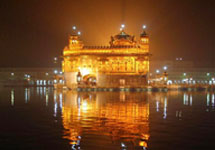

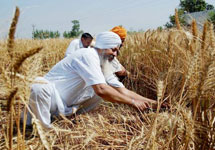
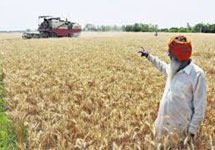
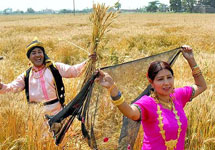
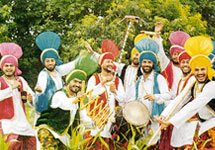
The Story of Baisakhi Festival began with the martyrdom of Guru Teg Bahadur, the 9th Sikh Guru who was publicly beheaded by Aurangzeb, the Mughal ruler. Aurangzeb wanted to spread Islam in India and Guru Teg Bahadur stood up for the rights of Hindus & Sikhs. The Mughals therefore saw him as a threat.
March 30, 1699 on this memorable day Guru Gobind Singh Sahib called a big meeting at Keshgarh Sahib near the City of Anandpur Sahib. When thousands of people assembled for Guru’s blessing, Guru Gobind Singh came out of the tent carrying an unsheathed sword. He gave a powerful speech to infuse courage amongst fellowmen. At the end of the speech he said that every great deed was preceded by equally great sacrifice and demanded that anyone prepared to give his life come forward. On the Guru’s third call, a young man (Daya Ram, a Khatri of Lahore) offered himself. The Guru took him into an adjoining enclosure and soon after came out with blood dripping sword in hand and asked again, "Is there any other Sikh who will offer himself as a sacrifice (for the cause of dharma)?" At this Dharam Das, a Jat of Delhi (Haryana side) came forward and was taken into the enclosure. Guru again came out with the blood-stained sword, and made his previous demand. In the same way three other men stood up, one after another, and offered themselves for the sacrifice (Mohkam Chand, a Chhimba of Dwarka (Gujarat State); Himmat, a cook of Jagannath (Orissa State); Sahib Chand, a barber of Bidar (Karnataka State). Everyone present was worried and though that Guru Gobind Singh has killed five Sikhs. At this point Guru presented all the five men before the people. Every one present was surprised to see all five men alive and wearing turbans and saffron - colored garments. These five were then administered "Khande di Pahul" (the double-edged Sword Amrit).
These five men were called "Panj Pyare" or "Beloved Five" by the Guru. The Guru blessed them with a Pahul ceremony. In an iron vessel, the Guru stirred with a sword called Khanda Sahib, the batasha that his wife, Mata Sundari Ji had put into water. The congregation recited verses from scriptures as the Guru performed the sacred ceremony. The water was now considered the sacred nectar of immortality called "Amrit". It was first given to the five volunteers, then drunk by the guru and later distributed amongst the crowd. With this ceremony, all those present, irrespective of caste or creed, became members of the Khalsa Pantha (the Order of the Pure Ones).
The Guru regarded the Panj Pyare as the first members of the Khalsa and the embodiment of the Guru himself. With the constitution of Panj Pyare, the high and low castes were amalgamated into one as among the original Panj Pyare, there was A Khatri (Shopkeeper); A Jat (Farmer); A Chhimba (Calico Printer); A Ghumiar (Water-carrier); and A Nai (Barber). The Guru gave the surname of Singh (Lion) to every Sikh and also took the name for himself. From Guru Gobind Rai he became Guru Gobind Singh. This was seen as a great step in national integration because society at that time was divided on the basis of religion, caste and social status.
About Punjab
Travel Guide
Main Links
Travel Information
Exploring Punjab - Vacations
Punjab's Forestry and Wildlife
The Unique eco-system of the Shivaliks is spread over a geographical area 9448.97 Sq. km, and lies in the north-eatern part of the state extending from north-west to south-east along the Himachal Pradesh Border. It is spread across the eastern part of the districts of Gurdaspur, Hoshiarpur, Shaheed Bhagat Singh Nagar and Rupnagar


